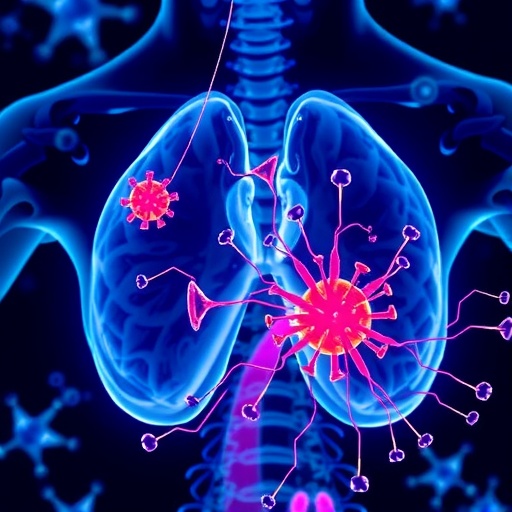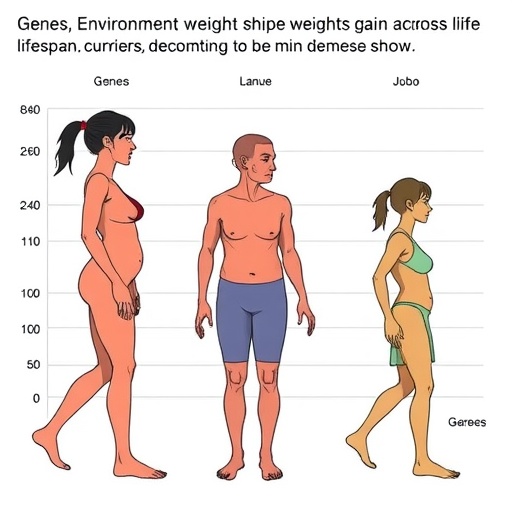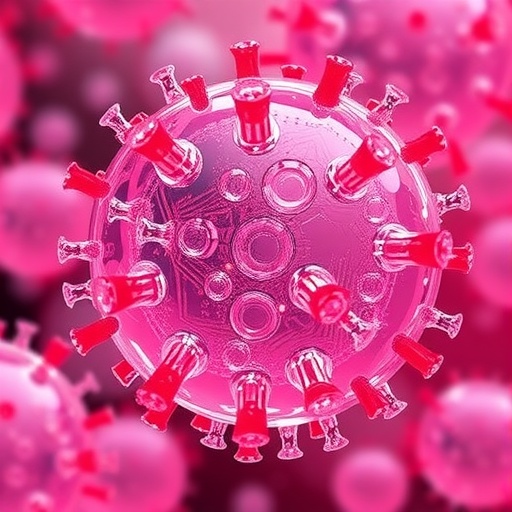
In a groundbreaking study that promises to redefine therapeutic approaches in prostate cancer, researchers have unveiled intricate molecular mechanisms driving a particularly aggressive form of the disease induced by radiation therapy. This newly characterized neuroendocrine prostate cancer (NEPC) cell subpopulation demonstrates a distinct axis involving the mucin protein MUC1 and the androgen receptor (AR), standing out as a pivotal regulator of tumor behavior post-radiation. The deeper understanding of this MUC1-AR axis not only sheds light on prostate cancer cell plasticity but also opens new avenues for targeted treatment strategies that could substantially improve patient outcomes.
Prostate cancer remains one of the most common malignancies affecting men worldwide, with androgen deprivation therapy (ADT) serving as a standard treatment for advanced stages. However, a frequent and devastating consequence of these therapies—paired often with radiation—is the emergence of treatment resistance. Notably, a subset of prostate cancer cells undergoes a phenotypic transition into a neuroendocrine-like state, characterized by low androgen receptor expression and heightened therapy resistance. This transformation results in an aggressive cancer subtype with poor prognosis. Understanding the molecular drivers behind this transition has been a formidable challenge, until now.
The study conducted by Macedo-Silva and colleagues employed rigorous cellular and molecular techniques to dissect the underpinnings of this radiation-induced prostate cancer evolution. By focusing on the role of MUC1, a transmembrane glycoprotein known for its involvement in tumor progression and immune evasion across multiple cancer types, the team identified its unexpected interplay with AR signaling pathways following radiation exposure. The researchers observed that MUC1 expression was significantly upregulated in the neuroendocrine prostate cancer (NEPC) cell fraction, suggesting a key role in facilitating the phenotypic shift.
.adsslot_DjyrR4wxCE{width:728px !important;height:90px !important;}
@media(max-width:1199px){ .adsslot_DjyrR4wxCE{width:468px !important;height:60px !important;}
}
@media(max-width:767px){ .adsslot_DjyrR4wxCE{width:320px !important;height:50px !important;}
}
ADVERTISEMENT
Exploring the functional repercussions of MUC1 elevation, the team demonstrated that MUC1 directly influences AR activity in these radiation-exposed cells. This relationship is intricate: while AR signaling is typically diminished in neuroendocrine prostate cancer, MUC1 appears to sustain a unique AR-driven transcriptional program that supports cellular survival and proliferation under therapeutic stress. Such findings challenge the conventional understanding that AR downregulation is absolute in NEPC and suggest a nuanced, context-dependent AR signaling mediated by MUC1.
The researchers leveraged high-throughput transcriptomic and proteomic analyses to delineate the downstream targets of the MUC1-AR complex within these resistant cancer cells. Their data unraveled an array of genes implicated in cell cycle progression, DNA damage response, and anti-apoptotic pathways, which collectively empower the cancer subpopulation to thrive despite radiation-induced stress. This molecular signature not only defines the aggressive phenotype but also spotlights actionable targets for therapeutic intervention.
Importantly, the study illuminated how radiation treatment inadvertently promotes MUC1 overexpression as part of an adaptive cellular response. This discovery raises crucial considerations regarding current treatment regimens and underscores the need for combination strategies that can circumvent or blunt such resistance mechanisms. By targeting the MUC1-AR axis specifically, clinicians may be able to suppress the emergence of NEPC cells, thereby forestalling progression to the lethal, treatment-refractory stage.
The translational significance of these findings lies in their potential to shape next-generation therapies for prostate cancer. Inhibitors aimed at MUC1 have been developed for other malignancies, and this study lays the groundwork for repurposing or optimizing such agents in the context of radiation-induced prostate cancer resistance. Moreover, understanding the dualistic role of AR within this subpopulation invites a reevaluation of androgen receptor-targeted therapies, potentially combining them with MUC1 inhibitors to achieve synergistic effects.
To validate their in vitro results, the investigators employed patient-derived xenograft models reflecting NEPC characteristics post-radiation. Treatment with MUC1 blockade in these systems resulted in marked tumor regression and restored sensitivity to radiation, emphasizing the therapeutic promise of this approach. These in vivo data underscore the biological relevance of the MUC1-AR axis and establish a compelling rationale for clinical trials targeting this pathway.
Beyond intrinsic tumor cell behavior, the study also explored MUC1’s role in modulating the tumor microenvironment. Given MUC1’s known capacity to interfere with immune recognition, elevated expression in NEPC cells may contribute to an immunosuppressive niche, further complicating treatment efforts. By disrupting this axis, therapies could not only diminish cancer cell viability but also potentiate immune-mediated tumor clearance.
This exceptional work exemplifies the power of integrative molecular oncology in uncovering adaptive resistance mechanisms fostered by current therapeutic interventions. By decoding the convoluted interactions between MUC1 and AR in radiation-treated prostate cancer cells, the researchers offer a roadmap toward precision medicine approaches that anticipate and counteract cancer cell plasticity. The implications extend beyond prostate cancer, as similar pathways might govern resistance in other tumor types subjected to radiation or hormone therapies.
The researchers also emphasize that continuous monitoring of MUC1 levels and AR activity in patients undergoing radiation could serve as an early biomarker of emerging neuroendocrine features and treatment resistance. Such biomarker-driven stratification may enable more timely and tailored therapeutic adjustments, optimizing survival rates and minimizing unnecessary toxicity.
As the field advances, future investigations are warranted to elucidate the systemic effects of MUC1-AR modulation, particularly its impact on metastatic dissemination and interaction with stromal and immune compartments. Delving deeper into the structural biology of the MUC1-AR interface could facilitate the design of highly specific inhibitors, minimizing off-target toxicity and maximizing clinical benefit.
The study by Macedo-Silva et al. heralds a paradigm shift in understanding prostate cancer evolution under the duress of radiation therapy. Their discovery of how the MUC1-AR axis orchestrates the emergence of a resilient neuroendocrine subpopulation not only fills critical gaps in cancer biology but also fosters hope for therapeutic breakthroughs capable of overcoming one of the most challenging clinical manifestations of this pervasive disease.
Subject of Research: Molecular mechanisms and therapeutic targets related to radiation-induced neuroendocrine prostate cancer subpopulations, focusing on the MUC1 and androgen receptor (AR) axis.
Article Title: Decoding MUC1 and AR axis in a radiation-induced neuroendocrine prostate cancer cell-subpopulation unveils novel therapeutic targets.
Article References:
Macedo-Silva, C., Albuquerque-Castro, Â., Carriço, I. et al. Decoding MUC1 and AR axis in a radiation-induced neuroendocrine prostate cancer cell-subpopulation unveils novel therapeutic targets. Cell Death Discov. 11, 306 (2025). https://doi.org/10.1038/s41420-025-02597-4
Image Credits: AI Generated
DOI: https://doi.org/10.1038/s41420-025-02597-4
Tags: advanced prostate cancer therapiesaggressive prostate cancer subtypesgroundbreaking cancer research findingsmolecular mechanisms in cancer therapyMUC1 androgen receptor axisneuroendocrine prostate cancerphenotypic transition in cancer cellspoor prognosis in neuroendocrine cancerprostate cancer cell plasticityradiation therapy and prostate cancertargeted treatment strategies for NEPCtreatment resistance in prostate cancer





